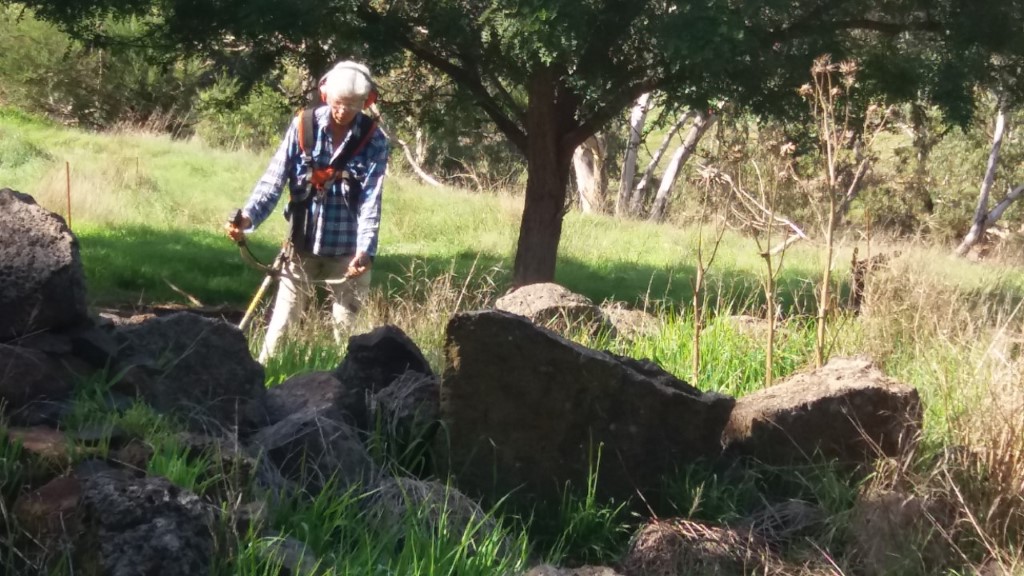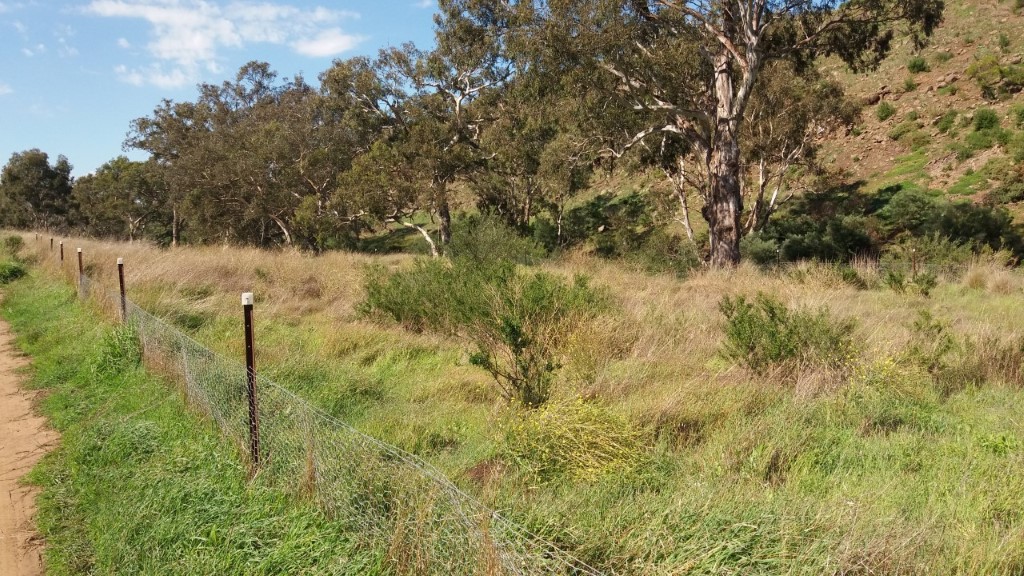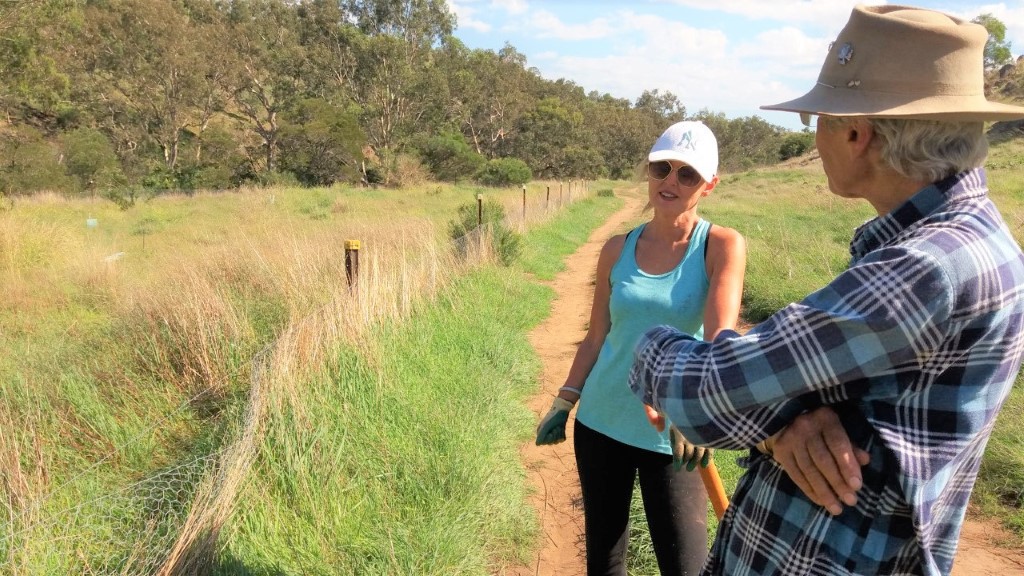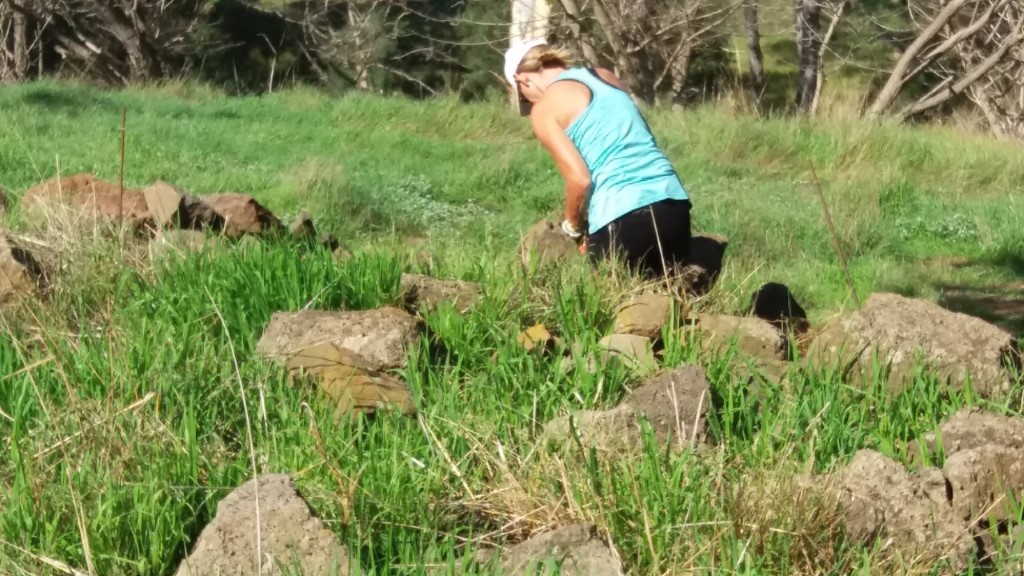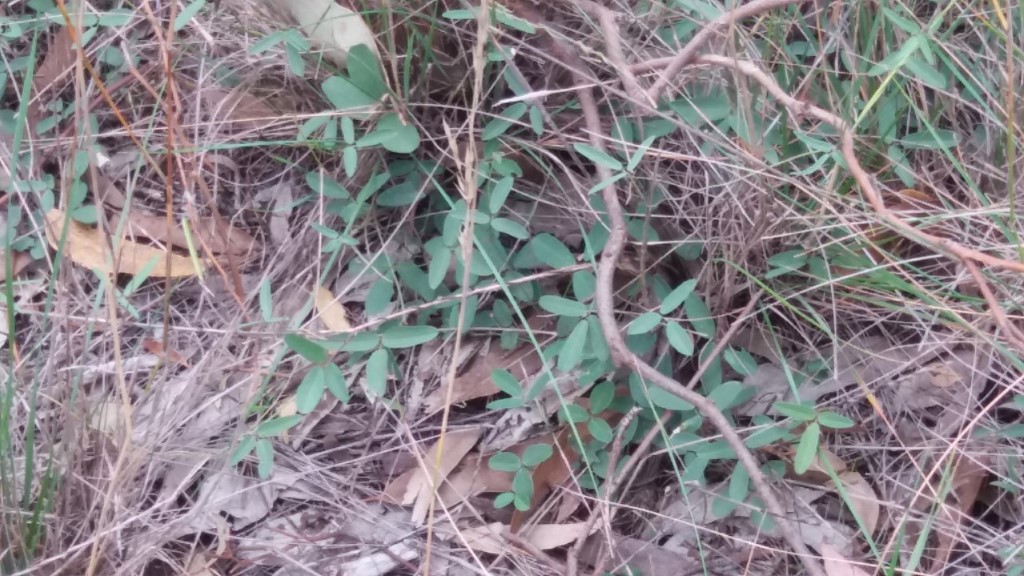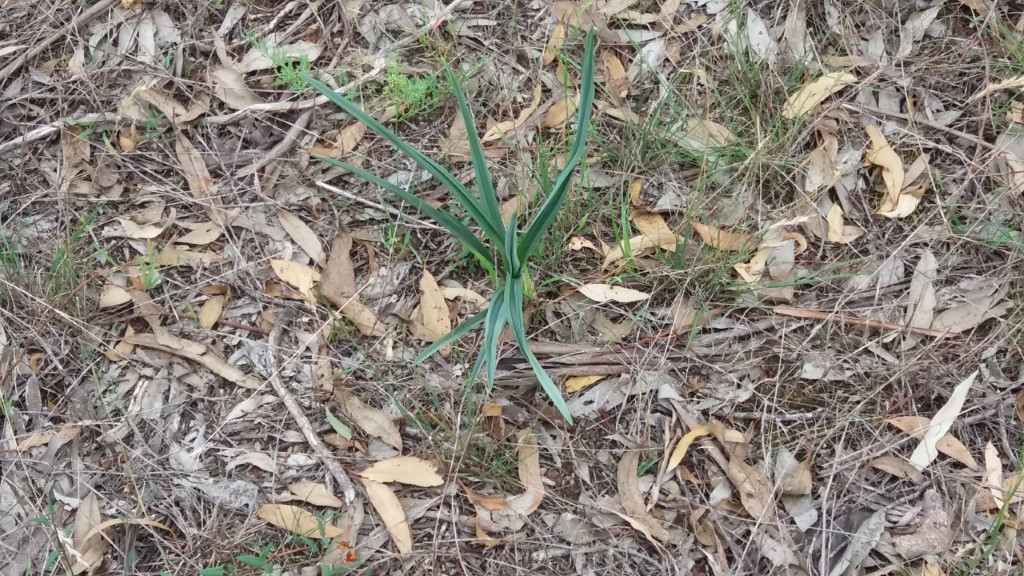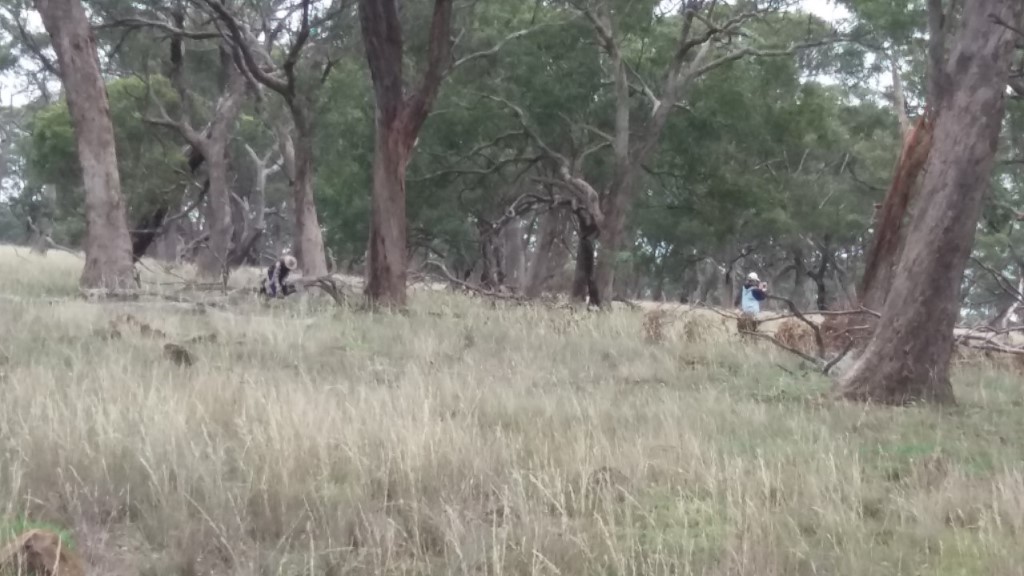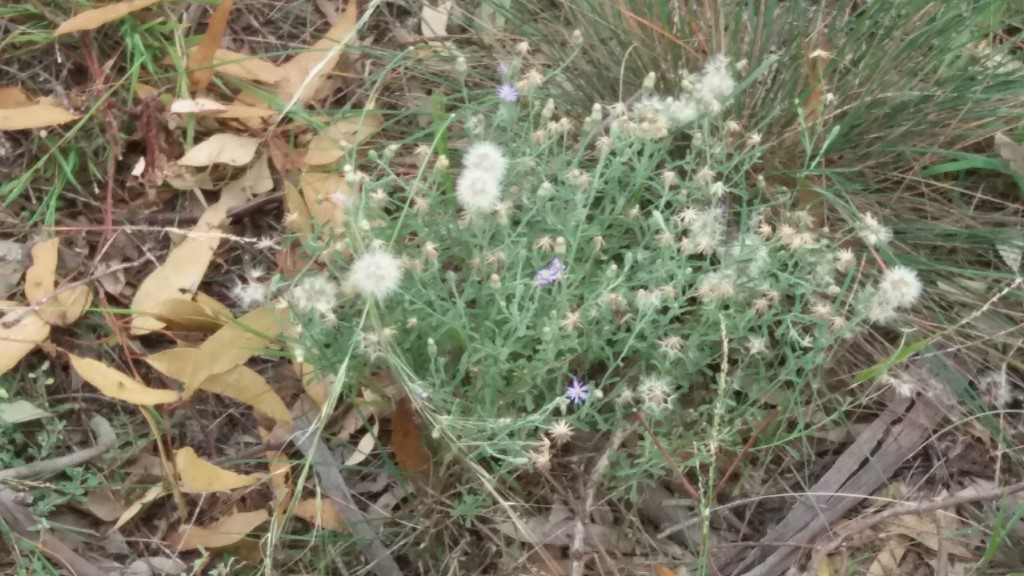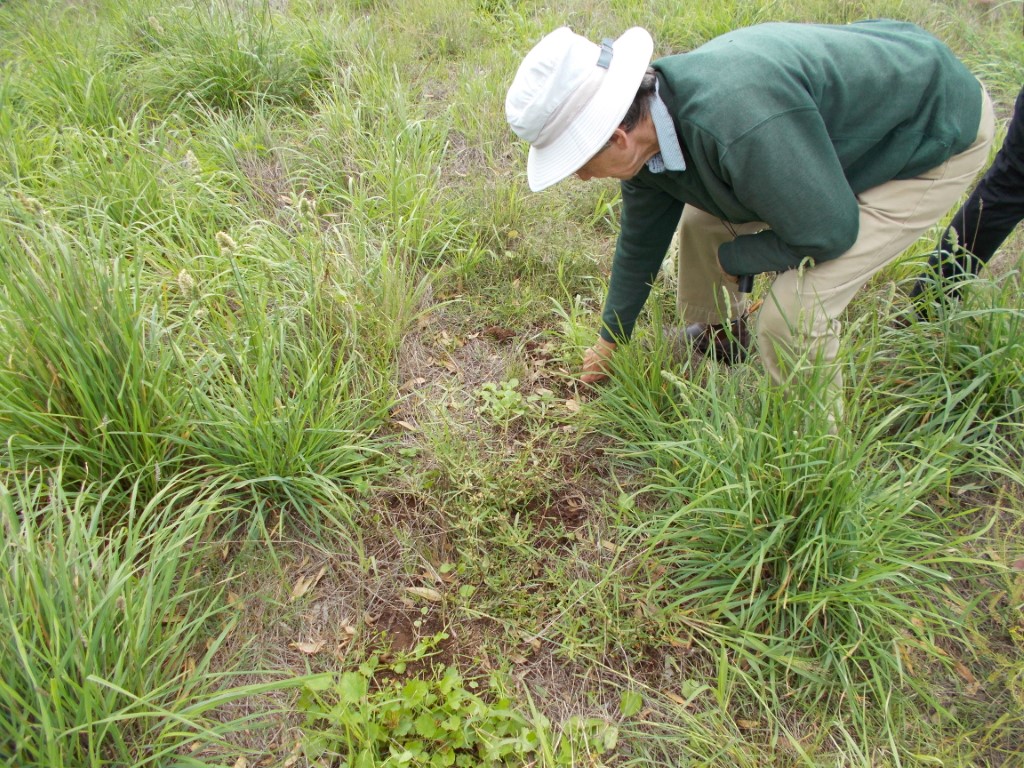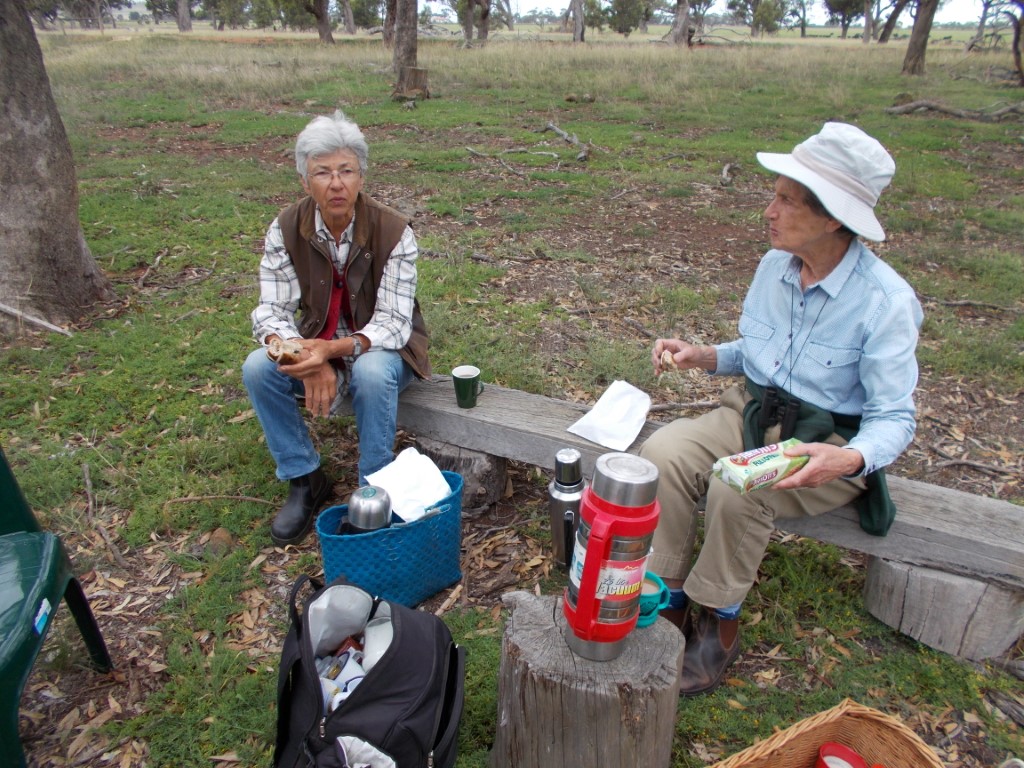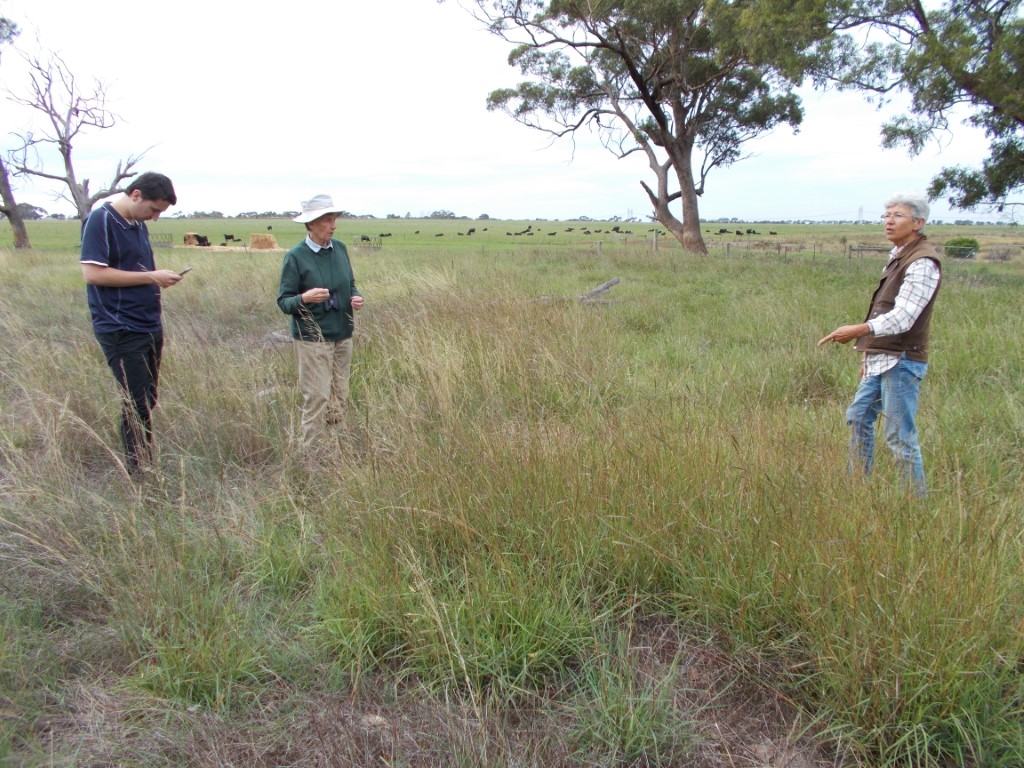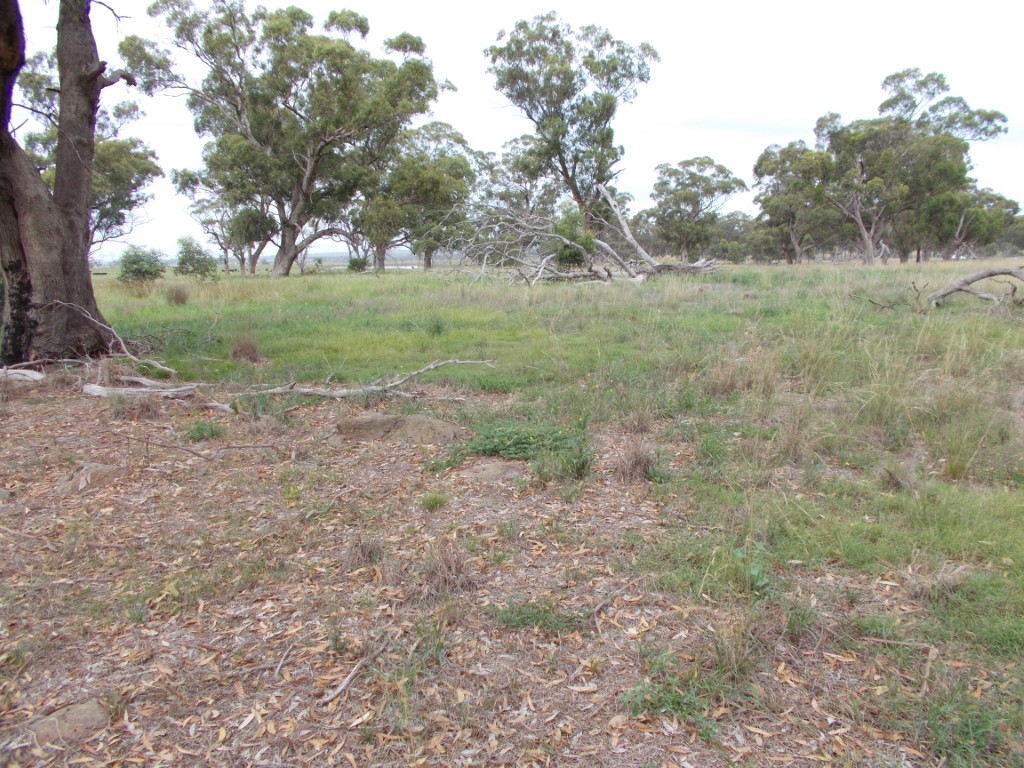
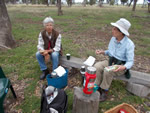 PLEG: Diary for 2022
PLEG: Diary for 2022
 PLEG: Diary for 2020
PLEG: Diary for 2020
Monitoring weeds in Pinkerton, Lightning strike in Pinkerton
Weed infestation in Pinkerton Link, Quarterly Bird Survey
Weed monitoring at Pinkerton Escarpment, Meeting at Upper Pinkerton to discuss flooding
Weeding around old Pinkerton homestead Wednesday 11th March
On Wednesday 11th March Irene, Rosemary and Daryl returned to Pinkerton Flat beside the Werribee River where we spent several hours weeding around the ruins of the old Pinkerton homestead.
Irene and Daryl tackled the thistles and Paterson’s Curse with whipper snippers while Rosemary attacked he weeds with a mattock.
Fortunately the thistles were green and soft so they were fairly easy to cut. We resolved that we should return at a later date to finish off the weeding with spraying, to prevent weed regeneration.
We noticed that rabbits were prolific along the Flat. We also noticed Prickly Pear and Spitting Cucumber.
After the weeding and morning tea we walked along Pinkerton Flat where we discussed possible strategies for revegetation along the flat. Melicytis bushes are regenerating naturally inside the rabbit-proof area and are growing in dense thickets.
We have several Blue Box trees that we can plant beside the homestead. The Blue Box trees we planted a few years ago have not survived so we will try planting more. We have about ten trees grown from seed collected from here.
We need to plant native grasses also near the access track as the grasses have not survived here either. Pinkerton Flat has proved a challenging site with several attempts to restore the natural vegetation here. We may move the goat trap from beside the homestead and place it near the access track, so that we may plant inside it. We also discussed placing rocks around the grasses and other plants to protect them from the harsh north winds that sweep down the gorge, drying out the soil. Perhaps beginning watering earlier in the year may help them survive. Also, concentrating on planting first close to bottom of the access track may create a wind barrier to protect plants downwind.
Diary 2020 No 7
Irene whipper snipping round old homestead
Melicytis regenerating inside rabbit-proof enclosure
Rosemary Irene Pinkerton Flat 11 Mar 2020
Rosemary round old homestead
Weeding in Pinkerton Forest Wednesday 23rd March
On Wednesday 23rd March Irene, Rosemary and Daryl returned to Pinkerton Forest where we spent several hours weeding.
Due to Stage Two Covid-19 restrictions we kept several metres from each other, in a 40 acre woodland this was not difficult.
Using mattocks we removed Galenia (Carpet Weed), Boxthorn & a very few Serrated Tussock.
After morning tea we collected seed from native grasses; Weeping Grass, Redleg Grass and Windmill Grass. The weeping Grass and Redleg Grass had grown prolifically in response to the accidental flooding from the breached bund that keeps irrigation water from Upper Pinkerton. Large quantities of exotic weed grass had grown as a result of its flooding but we were pleasantly surprised to see the native grasses proliferating also! Every cloud has a silver lining!
We are used to dealing with accidental flooding resulting in weed growth. The weeds are easily controlled by grazing by sheep.
However we decided that the grazing should be held over until late winter or earlier spring to allow the native grasses to set seed.
PLEG member Dr Rosemary Fethers created a set of health and safety guideline in response to Stage Two Covid-19 restrictions. Within days however these were quickly superseded by Stage Three restrictions.
We were pleased to see many wildflowers growing in the Forest, including New Holland Daisy, Desmodium and Dianella.
Diary 2020 No 6
Desmodium in Pinkerton Forest
Dianella in Pinkerton Forest
Irene, Rosemary weeding Pinkerton 23 Mar 2020
New holland daisy Pinkerton 23 Mar 2020
Meeting at Upper Pinkerton to discuss flooding 4th March 2020
On 4th March Frances, Irene, Nathan (Western Water) and Daryl met at Pinkerton to discuss weeds in Upper Pinkerton.
Stuart Boardman of contractor Haas and Grey reported that irrigation water had breached the boundaries and flooded into Upper Pinkerton, creating the growth of weeds. There was concern that the biodiversity of Upper Pinkerton would be adversely affected by the excessive weed growth.
The suggestion was made that the area could be grazed to remove the weeds.
We walked through the affected area to find that exotic weeds had proliferated in the flooded area.
However, we were amazed to see the proliferation of Microlaena (Weeping Grass) here among the weeds, following the flooding. The Redleg Grass and Windmill Grass are also seeding prolifically.
The Redleg Grass is especially valuable due to its very deep roots (at least 1.5 metres deep).
We are keen to see that the native grasses have an opportunity to fully develop & ripen, as this will greatly contribute to the biodiversity of Upper Pinkerton.
Also, the Plains Joyweed (Alternanthera sp 1) is growing well & flowering, especially in the flooded area. We are keen not to have this rare grassland plant grazed before it has the chance to set seed.
As we have not seen much Weeping Grass here in Upper Pinkerton we are eager to allow the seeds to mature & form a seed bank in the soil.
After discussion following our walk in Upper Pinkerton we decided that would like to see grazing here deferred until late winter or spring. The sheep may not be too keen anyway to eat the exotic grasses at this time as these are now quite tall. If they are unwilling to eat the tall exotic grasses then they may well eat the shorter natives that are now seeding.
There will be ample opportunity later in the year for sheep to graze the weeds in spring, without damaging the native grasses.
Excessive weed growth due to periodic irrigation overflow is something we have learn to deal with over the years. Not a great disaster in the overall scheme of things.
Diary 2020 No 5
Alternanthera Upper Pinkerton Mar 2020
Morning tea Pinkerton shed 4 March 2020
Nathan, Frances, Irene with Redleg Grass after flooding upper Pinkerton Mar 2020
Weed growth after flooding 4 Mar 2020
